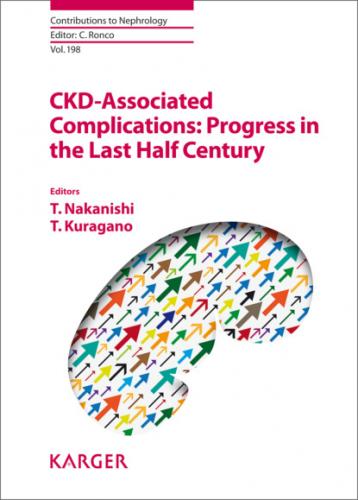Exercise Training
Nutritional therapy combined with exercise training was shown to have a sustained effect on protein synthesis even after dialysis sessions when the intervention was given before the sessions [26]. Also, intradialytic nutritional support was found to improve physical function and QOL in patients with PEW only when the therapy was combined with aerobic exercise training during dialysis sessions [27]. Thus, a combination of nutritional support and exercise training is more efficient than either of them alone.
Many dialysis patients have reduced ADL, and almost half of this population is reported to be sedentary, especially on dialysis days. Intradialytic exercise training has gained attention as a means to improve physical function [28]. Several systematic reviews unequivocally demonstrated that intradialytic exercise training can improve VO2 peak, Kt/V, and QOL measured with the Short Form Health Survey-36 [29, 30]. The Japanese Society of Renal Rehabilitation guidelines strongly recommend exercise training in dialysis patients.
A study that investigated the efficacy and adherence to exercise training according to the timing of its application found that supervised exercise training on non-dialysis days was more efficient than training done on dialysis days or without supervision, even though adherence was lower if it was performed on non-dialysis days [31]. Matsuzawa et al. [30] demonstrated that the number of steps on non-dialysis days measured with a pedometer can be a powerful predictor of subsequent survival in dialysis patients. The predictive power was maximized if the cut-off value was set at 3,752 steps per day. Patients with fewer than 4,000 steps per day experienced a higher mortality rate for 84 months thereafter (HR 2.37; 95% CI 1.22–4.60) [32].
Exercise training may also have a favorable effect on nutritional status. A study investigating the effect of exercise training on ghrelin or obestatin, cytokines that affect nutritional status or appetite, found that patients in the exercise group exhibited an increase in acyl-ghrelin, an active form of ghrelin [33]. Thus, exercise training might improve appetite and thus nutritional status in patients.
Individualized Management of Older Dialysis Patients
Older patients are generally susceptible to malnutrition-wasting conditions. However, the degree to which each patient exhibits these conditions varies. We investigated the heteroscedasticity of clinical indices in patients grouped by age based on data reported by the Japanese Society for Dialysis Therapy Renal Data Registry. Clinical indices relating to wasting such as creatinine, creatinine generation rate, and albumin exhibited higher heteroscedasticity in older than in younger dialysis patients [34]. Some patients look older than their actual biological age and such patients often experience worse clinical outcomes [1].
Age is the most powerful predictor of death. We demonstrated that the primary diagnosis of ESRD was not associated with survival after initiation of dialysis in older dialysis patients, but primary diagnosis did affect survival in younger patients [1]. As such, clinical intervention barely improves survival in older patients and alternative goals might be considered, such as improvement in QOL or ADL.
Heterogeneity among patients should be considered in malnutrition-wasting conditions. Dietary restriction can be considered for robust patients, but enhancing dietary intake and physical activity is important for frail older patients. Thus, in older dialysis patients, medical professionals should consider individualized strategies such as nutritional intervention and exercise training.
Conclusions
The dialysis population is becoming older, and older dialysis patients often develop malnutrition-wasting conditions. Nutritional interventions and exercise training are crucial to address these conditions. However, older patients are a heterogeneous population in terms of malnutrition-wasting conditions and individualized management should be considered.
Disclosure Statement
N.H. received lecture fees from Bayer Yakuhin K.K. and Kyowa Hakko Kirin, Co. Ltd.
Funding Source
The authors received no funding for this work.
References
1Hanafusa N, Nitta K, Tsuchiya K: The characteristics of the older dialysis population–heterogeneity and another type of altered risk factor patterns. Ren Replac Ther 2017; 3: 29.
2Nitta K, Hanafusa N, Tsuchiya K: Role of frailty on outcomes of dialysis patients. Contrib Nephrol 2018; 195: 102–109.
3Kim JC, Kalantar-Zadeh K, Kopple JD: Frailty and protein-energy wasting in elderly patients with end stage kidney disease. J Am Soc Nephrol 2013; 24: 337–351.
4Rosenberg I: Summary comments. Am J Clin Nutr 1989; 50: 1231–1233.
5Isoyama N, Qureshi AR, Avesani CM, Lindholm B, Barany P, Heimburger O, Cederholm T, Stenvinkel P, Carrero JJ: Comparative associations of muscle mass and muscle strength with mortality in dialysis patients. Clin J Am Soc Nephrol 2014; 9: 1720–1728.
6Fouque D, Kalantar-Zadeh K, Kopple J, Cano N, Chauveau P, Cuppari L, Franch H, Guarnieri G, Ikizler TA, Kaysen G, Lindholm B, Massy Z, Mitch W, Pineda E, Stenvinkel P, Treviño-Becerra A, Wanner C: A proposed nomenclature and diagnostic criteria for protein-energy wasting in acute and chronic kidney disease. Kidney Int 2008; 73: 391–398.
7Kalantar-Zadeh K, Kilpatrick RD, Kuwae N, McAllister CJ, Alcorn H Jr, Kopple JD, Greenland S: Revisiting mortality predictability of serum albumin in the dialysis population: time dependency, longitudinal changes and population-attributable fraction. Nephrol Dial Transplant 2005; 20: 1880–1888.
8Fried LP, Tangen CM, Walston J, Newman AB, Hirsch C, Gottdiener J, Seeman T, Tracy R, Kop WJ, Burke G, McBurnie MA; Cardiovascular Health Study Collaborative Research Group: Frailty in older adults: evidence for a phenotype. J Gerontol A Biol Sci Med Sci 2001; 56:M146–M156.
9Kojima G: Prevalence of frailty in end-stage renal disease: a systematic review and meta-analysis. Int Urol Nephrol
